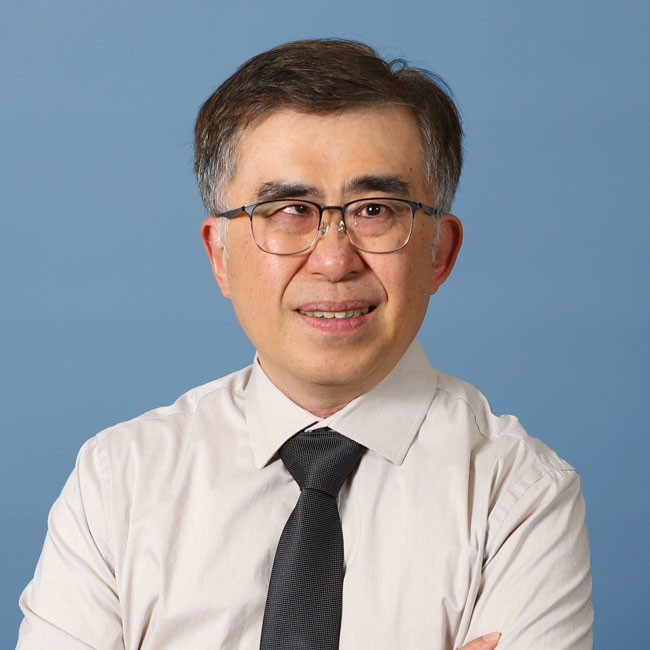Chris Wang, PhD
Biography
I recently joined the faculty of Ambrose University in Fall 2017. I was born and raised in Taipei, Taiwan, and received my high school educations in Buenos Aires, Argentina. My interest in cellular and molecular biology stemmed from two fascinating electron microscopy courses taken at the University of Lethbridge during my undergraduate studies. When I was a graduate student at the University of Calgary, I was working on gaining better understanding of the mechanisms that control cell division cycle using the African clawed frog, Xenopus laevis, and human tissue culture cells. Subsequently, I moved to the University of Minnesota for a brief one year post-doctoral fellowship to study the centrosome replication in mammalian cells. Currently, I am interested in understanding how stem cells maintain a proper balance between proliferation and differentiation using the germ line of free-living nematodes, Caenorhabditis elegans, and the human tissue culture cells as models.
In the past three years, I have taught a variety of non-major and major biology courses by incorporating a combination of learner-centered, active learning, and team-based learning pedagogies to facilitate students’ learning. My ultimate goal is to make each lecture a positive learning experience with the hope that all students would have successful classroom experiences, and are able to apply the obtained knowledge and skills to their future endeavors.
Current Research
Stem cells have the capacity to divide indefinitely into progeny cells that can continue as stem cells (i.e. self-renewal/proliferation) or differentiate into more specialized cells. Excessive stem cell proliferation may lead to tumour formation, whereas over differentiation could result in developmental defects. Therefore, an appropriate balance between proliferation and differentiation decision must be maintained in order for stem cells to function properly. The highly conserved GLP-1/Notch signaling pathway is a key regulator in governing this balance in many metazoans.
Since its establishment as a model organism, the nematode Caenorhabditis elegans has become an invaluable tool for biological and medical researches due to its short life cycle and simple anatomy, easiness and in expensive for maintaining and culturing, and tractability for forward and reverse genetics. My research interests is focused on understanding the molecular controls that modulate a proper balance between proliferation and differentiation decision using the germ line of C. elegans as a model. The C. elegans germ line is a polar tissue with distal cells dividing mitotically to form a population of proliferative germline stem cells, while more proximal cells enter meiosis and differentiate into sperm and oocytes. Results from genetic studies indicate that the GLP-1/Notch signaling pathway promotes mitotic proliferation of distal germ cells by antagonizing two redundant pathways that promote differentiation.
In our studies, we have found that the teg-1 (tumour enhancer of glp-1(gf)) gene plays a crucial role in regulating germline development in C. elegans. TEG-1-related proteins are found from yeast to humans and their functions remain to be elucidated. We have reported the isolation of C. elegans teg-1 mutants from genetic screens designed to identify mutations that enhance the tumorous germ line phenotype of a weak glp-1 gain-of-function allele (Wang et. al., 2012). We also found that TEG-1 and its human ortholog, CD2BP2, interacts with splicing factors. Intriguingly, results from our recent studies also suggest that TEG-1 CD2BP2 is involved in regulating the abundance of small, non-coding microRNAs by maintaining the stability of microRNA-induced silencing complex (Wang et. al., 2017). Currently, we are working on gaining insights into how TEG-1 regulates germline development via controlling microRNA abundance.
Select Publications
- Ramya Singh, Ryan B Smit, Xin Wang, Chris Wang, Hilary Racher, and Dave Hansen. 2021. Reduction of Derlin activity suppresses Notch-dependent tumours in the C. elegans germ line. PLOS Genetics 17(9): e1009687.
- Sau-Ching Wu, Chris Wang, Jonathan Chin, and Sui-Lam Wong. 2019. A bio-coupling approach using a dextran-binding domain to immobilize an engineered streptavidin to Sephadex for easy preparation of affinity matrix. Scientific Reports 9: 3359.
- Ariz Mohammad, Kara Vanden Broek, Christopher Wang, Anahita Daryabeigi, Verena Jantsch, Dave Hansen, and Tim Schedl. 2018. Initiation of meiotic development is controlled by three posttranscriptional pathways in Caenorhabditis elegans. Genetics 209: 1197-1224.
- Sau-Ching Wu, Chris Wang, Dave Hansen, and Sui-Lam Wong. 2017. A simple approach for preparation of affinity matrices: Simultaneous purification and reversible immobilization of a streptavidin mutein to agarose matrix. Scientific Reports 7:42849.
- Ryoko Kuriyama, Jon Pines, Kyung Lee, and Christopher L.C. Wang. 2007. Centrosome replication in hydroxyurea-arrested CHO cells expressing GFP-tagged centrin2. Journal of Cell Science 120:2444-2453.
- Chris Wang, Laura Wilson-Berry, Tim Schedl, and Dave Hansen. 2012. TEG-1 CDBP2 is involved in regulating stem cell proliferation and sex determination in the C. elegans germ line and physically interacts with the UAF-1 U2AF65 splicing factor. Developmental Dynamics 241:505-521.
- Pratyush Gupta, Lindsay Leahul, Xin Wang, Chris Wang, Brendan Bakos, Katie Jasper, Dave Hansen. 2015. Proteasome regulation of the chromodomain protein MRG-1 controls the balance between proliferative fate and differentiation in the C. elegans germ line. Development 142:291-302.
- Ryoko Kuriyama, Jon Pines, Kyung Lee, and Christopher L.C. Wang. 2007. Centrosome replication in hydroxyurea-arrested CHO cells expressing GFP-tagged centrin2. Journal of Cell Science 120: 2444-2453.
Recent Conference Presentations
- Dan Zhang, Chris Wang, Dave Hansen. The Role of the RNA-Induced Silencing Complex (RISC) Component VIG-1 in C. elegans Germline Stem Cell Regulation. 23rd International C. elegans Conference. Virtually via Zoom. June 21 – June 24, 2021. Abstract # 363C.
- Sadaf Sangari1, Kara Vanden Broek, Chris Wang, Dave Hansen. Understanding the role of scaffold protein activated C kinase 1 (RACK-1) in germ line stem cells of Caenorhabditis elegans. 23rd International C. elegans Conference. Virtually via Zoom. June 21 – June 24, 2021. Abstract # 357C.
- Kara Vanden Broek, Chris Wang, Dave Hansen. RACK-1 is required for proper GLD-1 sub-cellular localization and function. 23rd International C. elegans Conference. Virtually via Zoom. June 21 – June 24, 2021. Abstract # 259A.
- Sadaf Sangari, Kara Vanden Broek, Chris Wang, Dave Hansen. Understanding the Role of Receptor for Activated C Kinase 1 (RACK-1) in Caenorhabditis elegans’ Germ Line Stem Cells. Biological Sciences Graduate Symposium at the University of Calgary. March 25-26, 2021.
- Kara Vanden Broek, Chris Wang, and Dave Hansen. Investigating RACK-1's role in regulating stem cell proliferation in the C. elegans germline. International C. elegans Conference. University of California, Los Angeles. Los Angeles, CA. June 20 – June 24, 2019. Abstract # 374A.
- Kara Vanden Broek, Chris Wang, Xin Wang, and Dave Hansen. Investigating RACK-1's role in regulating stem cell proliferation in the C. elegans germ line. EMBO Workshop: C. elegans Development, Cell Biology and Gene Expression. Barcelona, Spain. June 13-17, 2018. Abstract # P-204.
- R. Singh, X. Wang, C. Wang, T. Sutton, K. Kowalchuck, H. Racher and D. Hansen. Derlin proteins promote Notch Signaling in the C. elegans germ line. 21th International C. elegans meeting. University of California Los Angeles. Los Angeles, CA. June 21-25, 2017. Abstract # 388C.
- K. Vanden Broek, P. Gupta, C. Wang, and D. Hansen. Regulation of germline stem cell proliferation by MRG-1 in C. elegans. 21th International C. elegans meeting. University of California Los Angeles. Los Angeles, CA. June 21-25, 2017. Abstract # 393B.
Education
Signature Courses
- BIO 231 - Cellular and Molecular Biology
- BIO 329 - Molecular Genetics and Omics
- BIO 338 - Developmental Biology
- BIO 455 - Cancer Biology
- MED 327 - Medical Genetics

